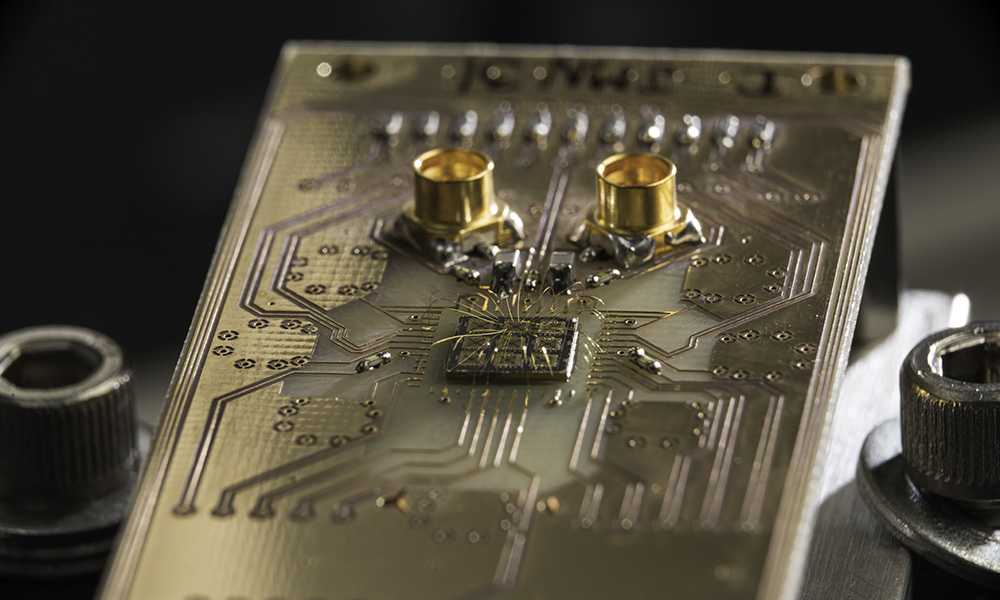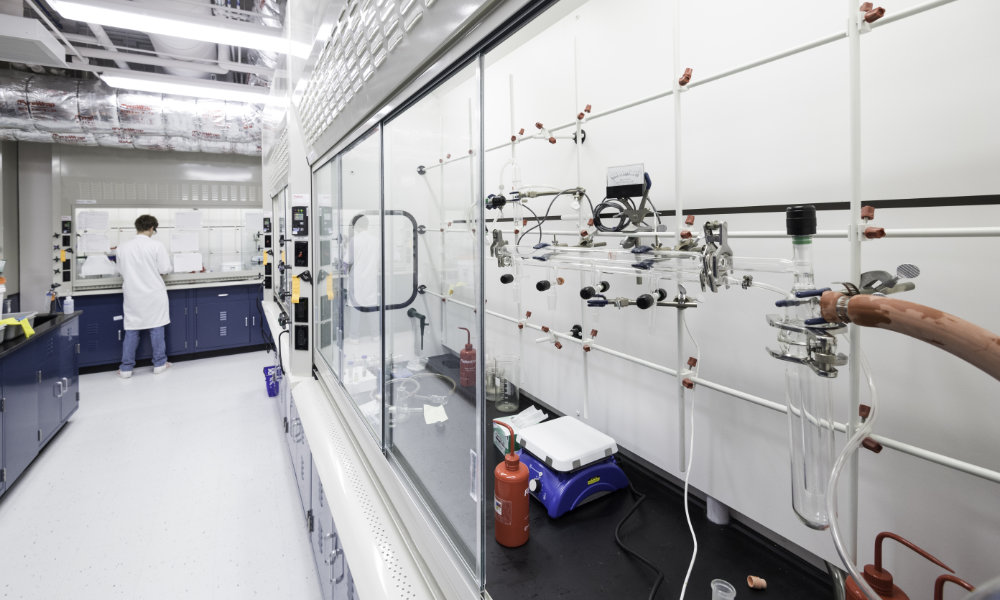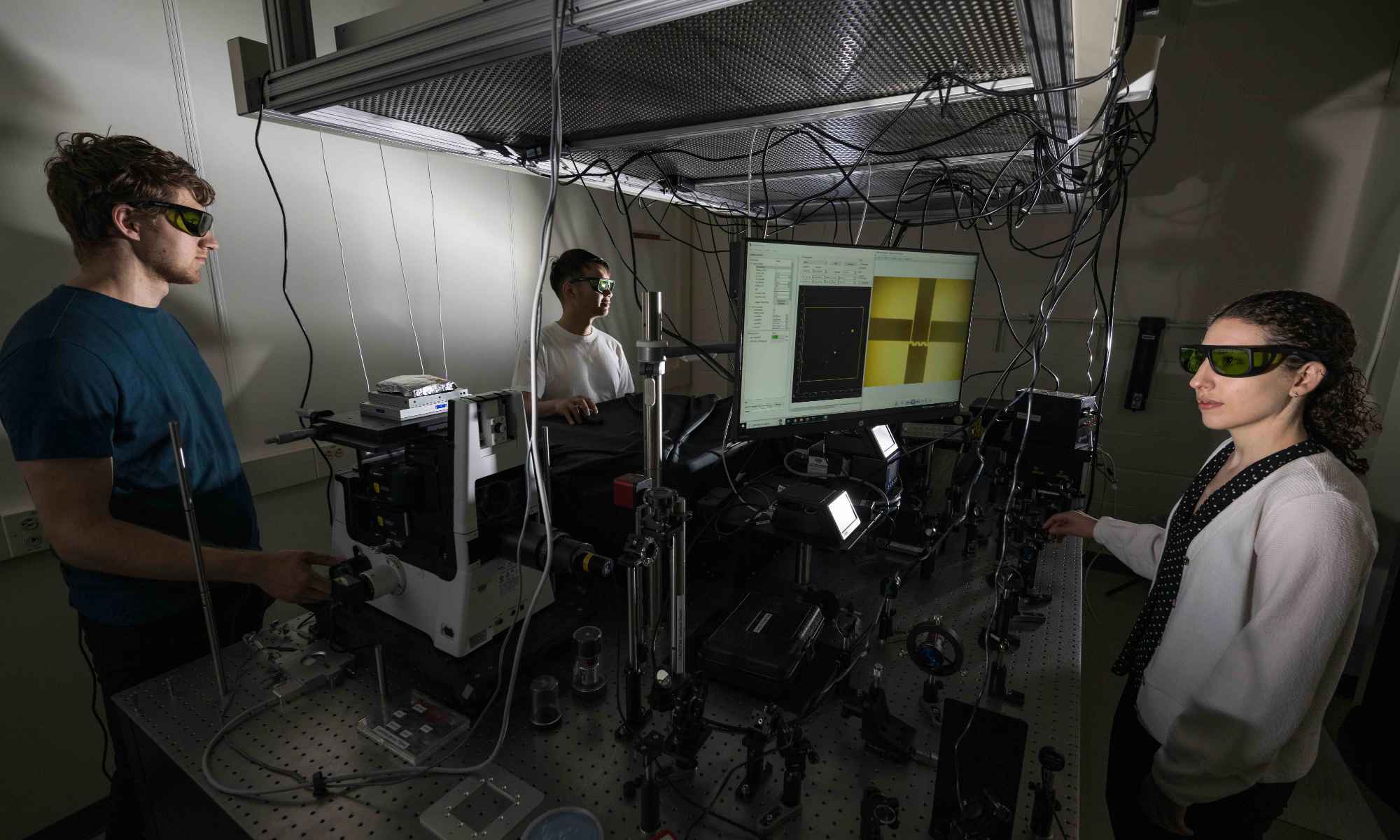Rochester researchers develop novel Ising machines with federal research and development funding support from DARPA.
“Why the Russian Military Is Bogged Down by Logistics.” “Allies Fail to Agree on Sending Tanks to Ukraine.”
These recent headlines underscore the importance of logistics in warfare. Which weapons and supplies are needed? In what quantity? And equally importantly, what is the most economical way to get these supplies to the right places, and at the right times, to soldiers in front lines spread over hundreds, even thousands of miles?
A team of University of Rochester electrical and computer engineers believe their invention—a simple computing device like no other—can help solve military logistic optimization problems in complex battles in the future.
To that end, the Defense Advanced Research Projects Agency (DARPA), a research and development agency of the United States Department of Defense, recently awarded the researchers a Quantum-Inspired Classical Computing grant—one that could total $6.1 million over five years—to develop two novel Ising machines.
Ising machines that outperform quantum computers?
Named after German physicist Ernst Ising, the Ising model describes how atoms in natural magnets or spin glasses assume one of two values—spin up or spin down—to arrange themselves in the lowest energy state. Ising machines are designed to mimic and further refine this process to find optimal solutions to so-called combinatorial optimization problems, which involve large numbers of competing alternatives. Moreover, in such problems, the number of possible solutions increases exponentially as the number of independent variables increases.
The machines would be tested on combinatorial optimization problems posed, for example, when supplying dozens, even hundreds of combat units, says the project’s principal investigator Michael Huang, a professor of electrical and computer engineering. They could also be used in many commercial applications, such as finding efficient routes for package deliveries, generating test patterns to detect faults in chips, and efficiently correcting errors for 5G wireless radios.
Compared to conventional computers, “our devices have a much simpler architecture,” Huang says. “It can only solve these kinds of optimization problems. We cannot do Zoom calls on it. So, it’s a very special-purpose machine. But it’s extremely good at what it does.”
The devices are still in the early stages of development by the Rochester team, which includes Gonzalo Mateos, Zeljko Ignjatovic, Qiang Lin, Selcuk Kose, and Hui Wu, also faculty members in the Department of Electrical and Computer Engineering. One of the devices, however, has undergone extensive simulations, which show that it would solve moderately sized optimization problems several orders of magnitude faster than conventional computers—and at far less energy, Huang says.
Compared to already existing $15M quantum annealers (a type of quantum computer), the simulated device will be “dirt cheap” to build and will be compatible with already existing CMOS (complementary metal-oxide semiconductor) integrated circuits, he adds.
Huang is confident the device will outperform even quantum computers in speed and power in solving optimization problems “at least in the current NISQ [noisy intermediate-scale quantum] era,” he says. Moreover, unlike quantum computers, which require cryogenic conditions, both devices his team proposes will operate at room temperature.
Leveraging nature’s laws of physics instead of conventional computation
Many occurrences in nature—for example, an object falling to the ground—can be modeled by writing and solving differential equations, according to Huang. “This suggests that nature itself is effectively solving these differential equations somehow,” he says.
Ising machines attempt to directly use the computation performed by nature. This is sometimes called “nature-based computing” or “physical computation.”
Various Ising machines have been developed to date, including optics-based, quantum designs. However, all of them have important practical constraints imposed by their design, Huang says. Some have only near-neighbor coupling capabilities across the various spins, also called nodes. Others use conventional computing to emulate coupling, thereby losing efficiency; yet others require elements that are hard to integrate on a chip.
The first Ising machine the Rochester team is developing is based on a BRIM (Bistable Resistively-Coupled Ising Machine) architecture. Pioneered by Huang and Ignjatovic and their former PhD students Richard Afoakwa and Yiqiao Zhang, it would provide coupling across all nodes without emulation while using elements that are easy to integrate on a chip. “I call it the world’s first Ising machine without major drawbacks,” Huang says.
At this point, the researchers have simulated the device at tens of thousands of nodes. “When you get to a very large scale—hundreds of thousands of nodes or more—we might run into a potential delay issue that could limit its performance,” Huang says.
As a more futuristic alternative, the team will also develop a second, optics-based Ising machine that Huang and Lin started to explore almost six years ago. Higher-speed optics-based machines have the potential to address critical path delay issues. However, large-scale photonic systems tend to be “more challenging to build simply because they are as yet not supported by a mature fabrication technology,” Huang says. “So, this will be more of a high-risk, long-term solution.”
A third part of the grant, headed by Huang and Mateos, involves developing software/hardware codesign to efficiently map problems to the two hardware platforms. And if fully funded, the project will support the equivalent of 12 PhD students or six PhD students and three postdoctoral associates across the researchers’ labs.
Read more
 Researchers continue to confront major hurdles in quantum computing
Researchers continue to confront major hurdles in quantum computing
With new insights on the problem of noise in quantum computing, Rochester researchers make major strides in improving the transfer of information in quantum systems.
![]() A laser that could ‘reshape the landscape of integrated photonics’
A laser that could ‘reshape the landscape of integrated photonics’
Rochester researchers see applications in LiDAR (Light Detection and Ranging), atomic physics, and augmented and virtual reality.
 ‘High risk’ project uses quantum science to unlock new chemical reactions
‘High risk’ project uses quantum science to unlock new chemical reactions
Rochester scientists have secured national funding for a multi-institutional research effort that could alter the basic rules of chemistry.



